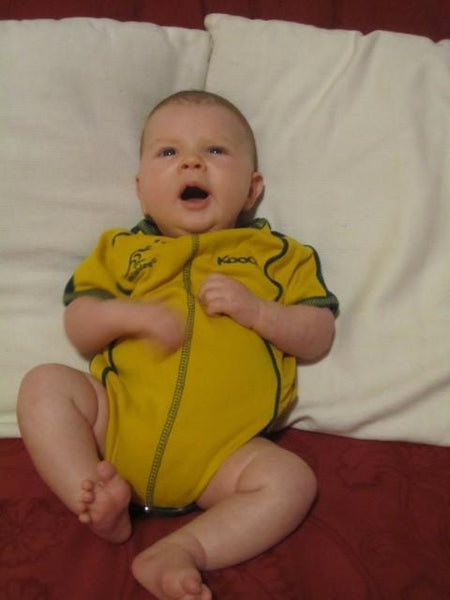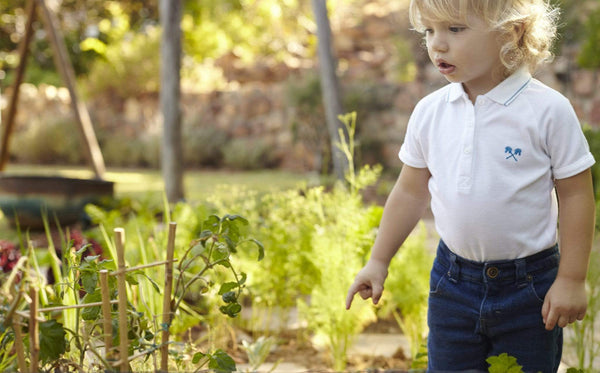Toddlers and Art: the biggest insult ever

Toddler art: Why you should never ask: “What is it?”
Reading time: 3.5 minutes
Next time your little bug hands you what looks like a scribbled, doodily mess, think carefully before you ask, ‘Wow, that is amazing, what is it?’ – even if you really haven’t a cooking clue!
“This is just about the biggest insult you can give your child”, says Uke Collins, a playgroup teacher who specialises in toddler art, “not only does the art not need to ‘be’ anything – imagine saying this to Jackson Pollock! – but in case it is meant to be something, it can be very discouraging for your child that no one else can see what that something is. In his head it is clearly an airplane”.
Children don’t do good or bad art, they do what is important to them, so use open ended questions, such as, ‘tell me about your picture’, or ask about the process: ‘how did you stick that?’;’ ‘what did you use to paint that?’; ‘how did you get that tower to be so tall?’. “My favourite response when I am shown a paper with a big brown swirling mess on it, is: ‘ I love the colours you mixed on that one’”, laughs Uke, “because the important thing is that your child created the art himself – it is the process that is important, not the final product”.
An even bigger insult is to throw any of your child’s masterpieces away! No one is suggesting that you keep every tiny scrap and scribble, just make sure that when you do throw anything away you do so in the dead of night, so that your child never sees you doing it. Here are five easy ways to show off your child’s scribbles, er, I mean, masterpieces…
1. Use coloured pegs and a piece of wire to hang up your child’s artworks. Your child could even paint wooden pegs, or decorate them with glitter and stickers.
2. Choose a wall in your home to be your gallery wall. Paint a square on it with some magnetic paint (available at hardware shops) and use colourful, fun magnets to ‘stick’ your child’s art to it.
3. Scan their favourite pieces and save them. You can then give your child a copy on the day they finish High School, graduate from university, or the day they have their first solo art exhibition. You can also get your favourite pieces printed onto canvas to hang in their room.
4. Recycle pieces of art into wrapping paper and cards for friends’ birthday presents.
5. Allocate the top shelf of your child’s bookshelves as a 3D (or box construction) art shelf. Replace the sculptures each week, as new ones are made. Also a good place to store all the collections of acrons, stones and leaves.
Who knew making a mess could be so good for you?
“Art develops the whole child,” says Uke, “physically, emotionally, socially, cognitively, as well as aesthetically”.
Physically, your child develops both fine and gross motor skills through holding paintbrush, string, pens, scissors, etc. It also exposes your toddler to different textures and teaches them about spacial awareness and how they fit into the space around them –known as proprioception.
Emotionally, art can help children work through any emotions that they are feeling and can be a good indicator of any issues that are going on – not only dramatic things like abuse at home, but also just a way of expressing everyday emotions.
Part of the cognitive skills art teaches are essential building blocks for reading and writing, such as crossing the midline (moving from right side of the body to the left and visa versa) by painting across a big piece of paper.
Of course talking about the artwork and how it was done develops language skills and imaginations are stimulated as an egg box becomes a tower or crumpled pieces of paper become a magic letter. Don’t forget all those essential social skills that are learnt during art lessons, such as sharing and taking turns or even working together as a group on one creative project – you have to learn that it is not acceptable to push, snatch or pour paint on each other’s heads sometime!
“Art is also about aesthetics”, explains Uke. It exposes your child to different creations that are all considered beautiful – a great opportunity to teach your child that beauty is about perspective: one thing may be beautiful to one person and not to another, but they are all art.
Like this post? Let us know your thoughts below.



















